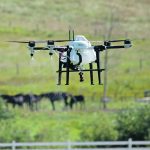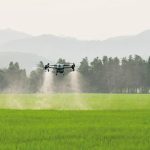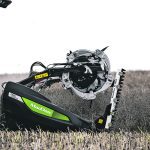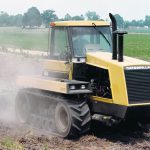 Crop Management
Crop Management

Getting ahead of anthracnose in lentils

New products and old practices recommended
Improved moisture this year means growers may need to dust off practices and products they haven’t used in a while
Recent rain has increased the need for pulse producers to get re-accustomed to disease management practices used in a season with adequate or high moisture that may have been set aside in recent dry years. “Moisture continues to be top of mind as a concern, but these spring rains definitely have been helping,” said Lori […] Read more
First new fenugreek varieties in decades in the works

Delays on drone spraying approvals frustrates farmer

Should farmers use drones to spray?
Producers are eager to adopt DIY aerial spraying, but a slow, careful approach if warranted, says sprayer expert
A number of farmers across Western Canada are using unmanned drones to spray crop protection products, and they’re doing it undeterred by a lack of regulatory approval, say ag drone experts. Markus Weber, president of Alberta-based LandView Drones, sells drones for agricultural applications, including crop spraying. Up until a few years ago, farmers were primarily […] Read more
Black Sea region expected to produce more flax
The crop is faring better than others in Russia's drought-hit regions, and acreage is anticipated to be higher than last year

Prices in the used ag equipment market are softening

Law to prevent lockouts stalled in Senate
Federal budget outlines plans for consultations on equipment interoperability and the right to repair machinery
Canadian short-line agriculture equipment manufacturers raised the alarm recently over some major brand original equipment manufacturers locking their onboard digital systems on selected machines. The move effectively prevents short-line manufacturers from connecting their attachments to those machines, which effectively locks them out of the market. It has particularly affected Canadian short-line manufacturers who build combine […] Read more
Aphanomyces soil test gets refined

Why did Caterpillar sell off the Challenger line?
Former Cat CEO Glen Barton explained distribution challenges helped prompt the sale in a conversation after his retirement
In early 2002, Caterpillar sold the Challenger belted tractor line it had developed to Agco, just 16 years after it introduced it to the market. However, some Caterpillar dealers in Canada continued to sell the Challenger, and because of the Cat-built drive train, the tractors continued to carry a Cat decal on their sides for […] Read more


 Crop Management
Crop Management

